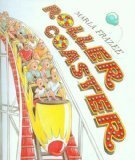Dawn Little's Blog, page 12
August 20, 2012
Boys of Steel: The Creators of Superman by Marc Taylor Nobleman
Recommended Grades: 3-5
The story of the creators of the Superman comic book series, Boys of Steel: The Creators of Superman is about Jerry Siegel and Joe Schuster. Jerry and Joe were two boys who realized that the U.S. needed a superhero during the Great Depression and modeled his alter ego after themselves.
is about Jerry Siegel and Joe Schuster. Jerry and Joe were two boys who realized that the U.S. needed a superhero during the Great Depression and modeled his alter ego after themselves.
Lesson Idea:
Writers Workshop:
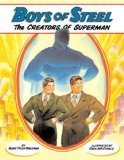

Biography Mentor Text: I’ve stated before that there are some great picture book biographies out there and Boys of Steel is another good one. Read aloud Boys of Steel: The Creators of Superman and discuss the lives of Jerry and Joe. Use this book as model during a study of biographies or as a model text for writers workshop when students are writing biographies
and discuss the lives of Jerry and Joe. Use this book as model during a study of biographies or as a model text for writers workshop when students are writing biographies
©2012 by Dawn Little for Picture This! Teaching with Picture Books. All Amazon links are affiliate links and may result in my receiving a small commission. This is at no additional cost to you.
Filed under: biographies, Boys of Steel: The Creators of Superman, teaching with picture books, writers workshop Tagged: biography mentor texts, The Boys of Steel, writers workshop

August 13, 2012
The Fantastic Flying Books of Mr. Morris Lessmore by William Joyce
Recommended Grades: 3-8
Morris Lessmore loved words. He loved stories. He loved books. But every story has its upsets. The power of story will save the day.
Lesson Idea:
Motivating Readers:
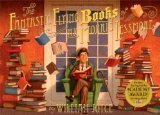

Mentor Texts: Read aloud The Fantastic Flying Books of Mr. Morris Lessmore and discuss the power of story. Read aloud the note about the author and discuss how the power of story saved the day in the writing of this book. Share the Academy Award winning short film (or parts of it), inspired by the story. And most interesting of all is the groundbreaking story app that brings the book to life. The app animates the pictures of the story and adds sound to make a truly interactive experience.
and discuss the power of story. Read aloud the note about the author and discuss how the power of story saved the day in the writing of this book. Share the Academy Award winning short film (or parts of it), inspired by the story. And most interesting of all is the groundbreaking story app that brings the book to life. The app animates the pictures of the story and adds sound to make a truly interactive experience.
©2012 by Dawn Little for Picture This! Teaching with Picture Books. All Amazon links are affiliate links and may result in my receiving a small commission. This is at no additional cost to you.
Filed under: motivation, teaching with picture books, The Fantastic Flying Books of Mr. Morris Lessmore Tagged: motivating readers, The Fantastic Flying Books of Mr. Morris Lessmore

August 10, 2012
August 10 for 10: A Picture Book Event
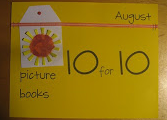 Cathy at Reflect and Refine and Mandy at Enjoy and Embrace Learning began this special event in 2010, after having a discussion stemming from this question: If you were stranded on an island and had to teach, what 10 picture books would you hope to have in your bag?
Cathy at Reflect and Refine and Mandy at Enjoy and Embrace Learning began this special event in 2010, after having a discussion stemming from this question: If you were stranded on an island and had to teach, what 10 picture books would you hope to have in your bag?
I participated in the list in 2010, missed it in 2011, but I’m back here with my 2012 list. I must admit that many of the books on my 2010 list will remain constant, but I tried to look back at the books I read over the last year to come up with a “new” list.
Here is a list of the 10 pictures books I would hope to have in my bag (in no particular order):



Roller Coaster by Marla Frazee
by Marla Frazee
Marla Frazee takes readers for a whirling, twirling, ride on a roller coaster.
This is a fantastic model of word choice and voice, when modeling the six traits of writing.


I Want My Hat Back  by Jon Klassen
by Jon Klassen
A bear loses his hat and asks the other animals if they have seen it. A surprise ending might catch the reader off guard.
This is a great book to model the craft of dialogue (an idea I received from @donalynbooks), but also organization as it has a great surprise ending. This is a really fun read and now there is a second book (out in October), This Is Not My Hat .
.
Press Here by Herve Tullet
by Herve Tullet
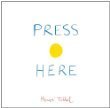

Press the yellow button. Go on, press it! It will take you into an imaginary world full of whimsy and color. A fascinating concept book,
Press Here
takes the reader on a journey page by page.
My second graders LOVED hearing this book read aloud to them and loved to read it individually when they had a chance. It’s just a fun book. This could also be a fun community building experience – after reading the book aloud, ask students to collectively write a book that models Press Here.
Freedom Song: The Story of Henry “Box” Brown by Sally M. Walker
by Sally M. Walker
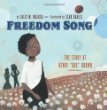

Henry “Box” Brown was a slave in the 1800’s on a plantation near Richmond, Va. Song was an important part of his life and he sang for all aspects of it. When Henry’s wife and children were sold to another master, Henry’s song stopped. And in the silence, he thought of an ingenious way to escape slavery and find freedom.
This is such a fascinating story; there are two books about Henry “Box” Brown now. My favorite is still Henry’s Freedom Box (which was on my first 10 for 10 list and I can safely say is one of my constants). This is a great model for students to use to write about a true event.
Martin’s Big Words: The Life of Dr. Martin Luther King, Jr. by Doreen Rappaport
by Doreen Rappaport
A biography of Martin Luther King, Jr. using his own words to showcase the information in the text.


This is a great model to use when discussing biographies. I ask students to model the author’s style, by writing a short biography of a person and using their actual quotes interspersed into their text.
Ducky by Eve Bunting
by Eve Bunting
A crate of bathtub toys are washed overboard in a storm. As waves crash all around them, the animals are separated until Ducky is left all alone. Will he wash ashore and find a friend?


Based on a true story, I use this book as a model for students to write their own story based on a news article or as a model for organization. The first line in the book hooks the reader. Ducky is a great mentor texts for hooks.
Snow Day! by Lester Laminack
by Lester Laminack


When the weatherman predicts an overnight snowfall, the narrator dreams of all the fun he can have on his day off from school. Children will enjoy the surprise ending.
I’m familiar with some of Laminack’s professional work, but this was the first picture book I read by him. It’s a fun read aloud that I used to discuss organization in writing. The surprise ending gets the reader every time!
Blackout by John Rocco
by John Rocco


It was a normal summer night in the city. . . hot, noisy, busy. Then the lights went out. The story of one family and what they do when the lights go out.
Blackout is a great book to use to model making inferences. The pictures really help the read put clues together to infer what happens when there is a blackout.
A Pig Parade Is a Terrible Idea by Michael Ian Black
by Michael Ian Black


Like most children, you probably think a pig parade is a terrific idea. . . this book begins, but the author shows you exactly why a pig parade is a terrible idea.
A Pig Parade is a Terrible Idea is a great example of a model text to teach persuasive writing to students. I read aloud A Pig Parade is a Terrible Idea and discussed the techniques the author used to persuade the reader that the idea of a pig parade is a bad one. The author also utilizes great sequencing words and a surprise wrap up that’s worth investigating.
Chalk by Bill Thomson
by Bill Thomson


In this wordless picture book, three children arrive in the park one day to find a bag full of chalk. Each takes a piece of chalk and draws a picture, which beautifully comes alive in this wonderfully illustrated book.
This is a great model to discuss sequencing with students. The pictures tell the story, so the author/illustrator must take care that the pictures make sense. I have students create their own wordless picture book to demonstrate their knowledge of sequencing after sharing many models of wordless picture books.
Can you list the top ten picture books you would want to teach with?
©2012 by Dawn Little for Picture This! Teaching with Picture Books. All Amazon links are affiliate links and may result in my receiving a small commission. This is at no additional cost to you.
Filed under: August 10 for 10: A Picture Book Event, teaching with picture books Tagged: A Pig Parade is a Terrible Idea, August 10 for 10: A Picture Book Event, Blackout, Chalk, Ducky, Freedom Song, I Want My Hat Back, Martin's Big Words, Press Here, Roller Coaster, Snow Day

July 30, 2012
Roller Coaster by Marla Frazee
Recommended Grades: K-5
Marla Frazee takes readers for a whirling, twirling, ride on a roller coaster.
Six Traits: Word Choice/Voice:
Mentor Texts: Read aloud Roller Coaster while allowing students to see the text at the same time. Depending on the level of your students, discuss how the author builds excitement to create voice in the piece. Or discuss how the author’s word choice created voice in the piece. Scaffold for your class’ needs. Ask students to pick a memorable event from their own life to describe as the author did. Have students practice the craft of building excitement or specific word choice in their own writing.
while allowing students to see the text at the same time. Depending on the level of your students, discuss how the author builds excitement to create voice in the piece. Or discuss how the author’s word choice created voice in the piece. Scaffold for your class’ needs. Ask students to pick a memorable event from their own life to describe as the author did. Have students practice the craft of building excitement or specific word choice in their own writing.
©2012 by Dawn Little for Picture This! Teaching with Picture Books. All Amazon links are affiliate links and may result in my receiving a small commission. This is at no additional cost to you.
Filed under: Roller Coaster, six traits of writing, teaching with picture books, voice, word choice, writers workshop Tagged: Roller Coaster by Marla Frazee, six traits of writing, voice, word choice, writers workshop

July 23, 2012
Water Sings Blue by Kate Coombs
Recommended Grades: 3-5
Readers learn about various sea life in this collection of poetry written about the ocean.
Lesson Idea:
Poetry:
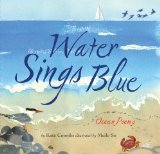

Mentor Texts: Read aloud poetry from Water Sings Blue and use the poems as mentors when working in a poetry unit. The metaphors and similes, the lyrical language, and the description all act as great mentors for students when writing, reading, or listening to poetry. Ladder this with The Tree That Time Built: A Celebration of Nature, Science, and Imagination
and use the poems as mentors when working in a poetry unit. The metaphors and similes, the lyrical language, and the description all act as great mentors for students when writing, reading, or listening to poetry. Ladder this with The Tree That Time Built: A Celebration of Nature, Science, and Imagination by Mary Ann Hoberman and Linda Winston.
by Mary Ann Hoberman and Linda Winston.
©2012 by Dawn Little for Picture This! Teaching with Picture Books. All Amazon links are affiliate links and may result in my receiving a small commission. This is at no additional cost to you.
Filed under: Poetry, teaching with picture books, Water Sings Blue by Kate Coombs, writers workshop Tagged: poetry mentor, Water Sings Blue, writers workshop

July 16, 2012
How to Babysit a Grandpa by Jean Reagan
Recommended Grades: 3-5
Babysitting a grandpa is fun – if you know how. In this book, you will find the essential tips for being a good grandpa-sitter, including: how to play with a grandpa, things to do on a walk, and snacks grandpas like to eat.
Lesson Idea:
How To Writing:
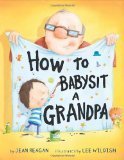

Mentor Texts: Read aloud How to Babysit a Grandpa and discuss how the author provides tips for babysitting a grandpa. Create a list of other things students are experts at, things they might be able to write a “how-to” about. Use How To Babysit a Grandpa as a model for writing “how-to” texts.
and discuss how the author provides tips for babysitting a grandpa. Create a list of other things students are experts at, things they might be able to write a “how-to” about. Use How To Babysit a Grandpa as a model for writing “how-to” texts.
©2012 by Dawn Little for Picture This! Teaching with Picture Books. All Amazon links are affiliate links and may result in my receiving a small commission. This is at no additional cost to you.
Filed under: How to Babysit a Grandpa, procedural writing, teaching with picture books, writers workshop Tagged: How to Babysit a Grandpa, procedural writing, writers workshop

July 9, 2012
Pass It On by Marilyn Sadler
Recommended Grades: 3-5
The cow is stuck in the fence. Yet, somehow that message gets lost in the “telephone” game as animal after animal hears something different. They all work together at the end to rectify the situation.
Lesson Idea:
Listening Comprehension/Following Directions:
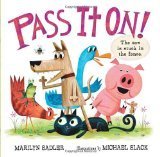

Mentor Texts: Read aloud Pass It On as part of a unit on following directions. Use it as a guide for effective communication. What happens when you hear something differently then intended? Play the telephone game to model the miscommunication in the book. Discuss how the intended message gets lost when shared among many people.
as part of a unit on following directions. Use it as a guide for effective communication. What happens when you hear something differently then intended? Play the telephone game to model the miscommunication in the book. Discuss how the intended message gets lost when shared among many people.
©2012 by Dawn Little for Picture This! Teaching with Picture Books. All Amazon links are affiliate links and may result in my receiving a small commission. This is at no additional cost to you.
Filed under: Following Directions, Listening Comprehension, Pass It On by Marilyn Sadler, teaching with picture books Tagged: following directions, listening comprehension, Pass It On








July 2, 2012
Mrs. Spitzer’s Garden by Edith Pattou
Recommended Grades: 3-5
Mrs. Spitzer is a wise teacher. She knows about gardens and she knows about children. She knows
how both will flourish if they are tended to lovingly. Using the metaphor of a garden, Pattou expertly
describes what happens when a teacher tends to her students.
Lesson Idea:
Author’s Message:
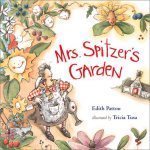 Mentor Texts: Read aloud Mrs. Spitzer’s Garden and discuss what the author is trying to tell the reader. What is her message? Use this as a ladder to more complex texts when helping students determine author’s message. Eventually, provide a book or short story for students to determine if they are able to find the author’s message independently.
Mentor Texts: Read aloud Mrs. Spitzer’s Garden and discuss what the author is trying to tell the reader. What is her message? Use this as a ladder to more complex texts when helping students determine author’s message. Eventually, provide a book or short story for students to determine if they are able to find the author’s message independently.
*Based on an idea Franki Sibberson shared at the All Write Summer Institute*
©2012 by Dawn Little for Picture This! Teaching with Picture Books. All Amazon links are affiliate links
and may result in my receiving a small commission. This is at no additional cost to you.
Filed under: author's message, Mrs. Spitzer's Garden Tagged: author's message, Mrs. Spitzer's Garden








June 25, 2012
George: George Washington, Our Founding Father by Frank Keating
Recommended Grades: 4-6
A first person telling of the more important events in George Washington’s life is told woven with quotes from his “Rules of Civility.”
Lesson Idea:
Memoir-esque:
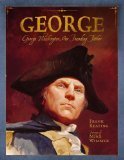

Mentor Texts: Several recent books weave quotes from the person into the story. This is a great model for students to use in their own writing. Read aloud George: George Washington, Our Founding Father (Paula Wiseman Books) and discuss how he used his “Rules of Civility” to guide his character. How did the author effectively weave Washington’s actual rules into the story? Read aloud other books, like Martin’s Big Words or Imogene’s Last Stand that effectively use quotes woven through story as model texts. Have students use the models to guide their own writing.
and discuss how he used his “Rules of Civility” to guide his character. How did the author effectively weave Washington’s actual rules into the story? Read aloud other books, like Martin’s Big Words or Imogene’s Last Stand that effectively use quotes woven through story as model texts. Have students use the models to guide their own writing.
©2012 by Dawn Little for Picture This! Teaching with Picture Books. All Amazon links are affiliate links and may result in my receiving a small commission. This is at no additional cost to you.
Filed under: Content Connections, Famous Quotes, George by Frank Keating, memoir, nonfiction, nonfiction writing, teaching with picture books, using quotes Tagged: famous quotes, George by Frank Keating, memoir-esque, nonfiction writing








June 18, 2012
Heart and Soul: The Story of America and African Americans by Kadir Nelson
Recommended Grades: 4-6
Tracing the history of the role of African Americans in America back to the Revolutionary times, Kadir Nelson weaves a tale of inspiration and injustice. Written from the view point of an elderly African American woman, you get the feeling that you are having a conversation with her in your living room. It provides a more personal outlook on the history of African Americans in America. As always, Kadir Nelson’s artwork is dramatically beautiful.
Lesson Idea:
Historical Fiction:
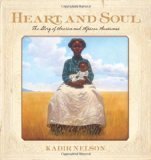

Mentor Texts: Read aloud all or part of Heart and Soul: The Story of America and African Americans to provide a personal perspective on African Americans through a historical context. As you study the Revolutionary War, discuss how African Americans really felt when fighting for a new country. Pair it with Henry’s Freedom Box or Freedom Song when discussing slavery or civil rights. Do the perspectives of the characters in the two books reflect what is believed to be the perspective in Heart and Soul: The Story of America and African Americans
to provide a personal perspective on African Americans through a historical context. As you study the Revolutionary War, discuss how African Americans really felt when fighting for a new country. Pair it with Henry’s Freedom Box or Freedom Song when discussing slavery or civil rights. Do the perspectives of the characters in the two books reflect what is believed to be the perspective in Heart and Soul: The Story of America and African Americans ? I love to find books that provide a different perspective of historical events for students. Heart and Soul: The Story of America and African Americans
? I love to find books that provide a different perspective of historical events for students. Heart and Soul: The Story of America and African Americans is one of those books.
is one of those books.
©2012 by Dawn Little for Picture This! Teaching with Picture Books. All Amazon links are affiliate links and may result in my receiving a small commission. This is at no additional cost to you.
Filed under: Heart and Soul by Kadir Nelson, historical fiction, other perspectives, teaching with picture books Tagged: Heart and Soul by Kadir Nelson, historical fiction, mentor texts, other perspectives









